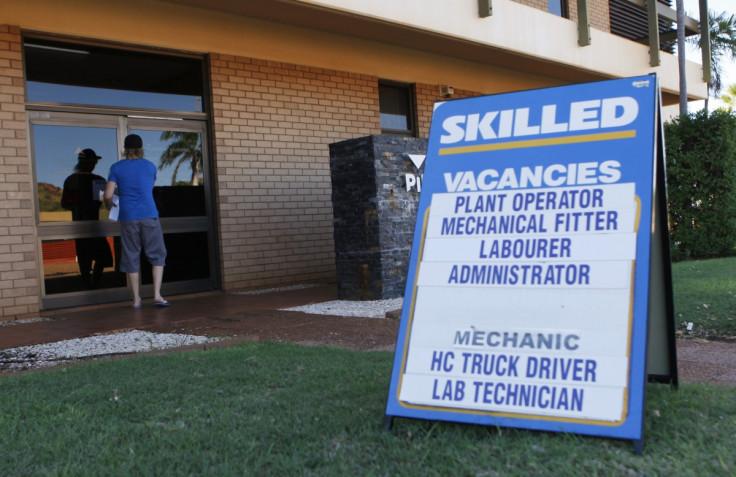Aussie dollar plummets as weaker-than-expected jobs data increase rate cut chances

Australian dollar plunged and traded closer to the 3 February six-year low on Thursday as labour market data for January indicated worsening growth scenario of the country, increasing expectations of another rate cut by Reserve Bank of Australia in the near future.
AUD/USD fell to 0.7644, down 0.81% on the day and compared to the six-year low of 0.7626 touched earlier this month. The Aussie dollar has fallen 2% so far this week.
The unemployment rate surged to 6.4% at the start of the year, its highest since 2002 and compared to the December rate of 6.1% and market consensus of 6.2%.
Also, the number of people employed fell by 12,200 to 11.668 million in January, against market expectations of a rise of 5,000. December had seen an addition of 42,000.
Australian jobless rate had been rising since April when it was 5.8% and printed 6.2% for three straight months before making the December surprise of 6.1%.
Now that surprise seems short-lived and people look out for higher rates going forward keeping the RBA remarks about the country's jobs market in the latest policy statement.
"Overall, the Bank's assessment is that output growth will probably remain a little below trend for somewhat longer, and the rate of unemployment peak a little higher, than earlier expected. The economy is likely to be operating with a degree of spare capacity for some time yet," said Glenn Stevens, the RBA Governor.
It was after the 3 February surprise policy move that took the official cash rate down 25 basis points to 2.25% the Aussie dollar fell to a six-year low and with most analysts now expecting the RBA to cut in the March meeting as well, the currency is likely to fall to new multi-year lows in the coming days.
The next major support for AUD/USD is 0.7012 but there are intermediate levels like 0.7386 and 0.7250 to watch out for ahead of that. On the higher side, the major resistance barrier is 0.8000 and as long as that is not broken, downside risks will dominate.
Meanwhile, the Melbourne Institute survey showed consumer price inflation expectations rise 0.8 percentage points to 4%, but failed to arrest the losses in the Australian dollar.

© Copyright IBTimes 2025. All rights reserved.






















